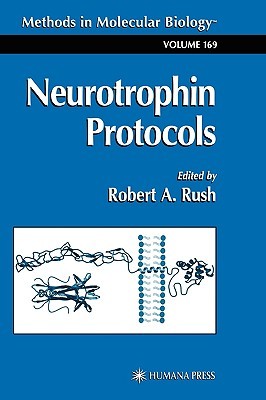
- We will send in 10–14 business days.
- Publisher: Humana
- ISBN-10: 0896036995
- ISBN-13: 9780896036994
- Format: 16 x 23.7 x 2.1 cm, hardcover
- Language: English
- SAVE -10% with code: EXTRA
Neurotrophin Protocols (e-book) (used book) | bookbook.eu
Reviews
Description
The past decade has seen an extraordinary growth in research interest in neurotrophic factors, and the study of the neurotrophin family has led this activity. Nevertheless, this area of research has often struggled as a result of techniques that were either inadequate or just emerging from other research fields and disciplines. Neurotrophin Protocols has brought together many leaders in the neurotrophin field who detail their special expertise in a wide variety of techniques. Though most procedures are valid across many diff- ent fields of research, some of those described here have been developed to address particular issues within the neurotrophic factor field. The protocols cover a broad range of biochemical, histological, and biological techniques that are often required by the modern laboratory. However, all have been written with sufficient detail to allow any laboratory to achieve proficiency without need of reference to other texts. Neurotrophin Protocols is divided into four sections dealing with p- tein, RNA, recombinant, and in vivo techniques. Protein techniques have in general been less successfully employed than those dealing with RNA or DNA. However, procedures that achieve localization and quantification of the neurotrophins are now being used more extensively. Their inclusion here should assist further studies at the protein level. Transgenic cell lines and animals are commonplace in the scientific research literature, but their inc- sion in several chapters in this book provide some novel uses that are not readily available elsewhere.
EXTRA 10 % discount with code: EXTRA
The promotion ends in 19d.06:46:39
The discount code is valid when purchasing from 10 €. Discounts do not stack.
- Publisher: Humana
- ISBN-10: 0896036995
- ISBN-13: 9780896036994
- Format: 16 x 23.7 x 2.1 cm, hardcover
- Language: English English
The past decade has seen an extraordinary growth in research interest in neurotrophic factors, and the study of the neurotrophin family has led this activity. Nevertheless, this area of research has often struggled as a result of techniques that were either inadequate or just emerging from other research fields and disciplines. Neurotrophin Protocols has brought together many leaders in the neurotrophin field who detail their special expertise in a wide variety of techniques. Though most procedures are valid across many diff- ent fields of research, some of those described here have been developed to address particular issues within the neurotrophic factor field. The protocols cover a broad range of biochemical, histological, and biological techniques that are often required by the modern laboratory. However, all have been written with sufficient detail to allow any laboratory to achieve proficiency without need of reference to other texts. Neurotrophin Protocols is divided into four sections dealing with p- tein, RNA, recombinant, and in vivo techniques. Protein techniques have in general been less successfully employed than those dealing with RNA or DNA. However, procedures that achieve localization and quantification of the neurotrophins are now being used more extensively. Their inclusion here should assist further studies at the protein level. Transgenic cell lines and animals are commonplace in the scientific research literature, but their inc- sion in several chapters in this book provide some novel uses that are not readily available elsewhere.


Reviews